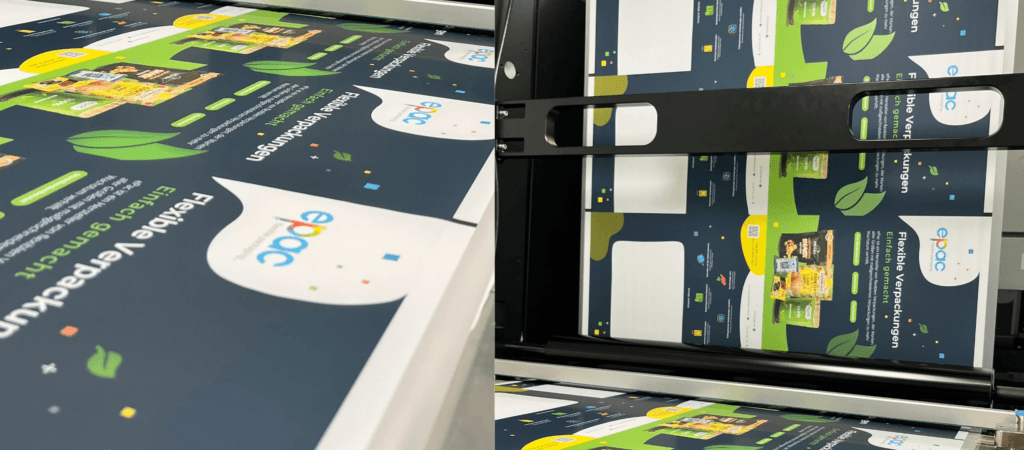The retail landscape has undergone a significant transformation in recent years, with consumers seamlessly transitioning between online and in-store shopping experiences. For brands looking to make a lasting impression, flexible packaging plays a pivotal role in shaping the customer’s perception. Achieving packaging quality consistency across both online and in-store sales channels is essential for maintaining brand integrity and meeting customer expectations.
The Evolution of Retail Channels
As e-commerce continues to thrive, brands find themselves navigating a dual landscape, catering to both online and traditional brick-and-mortar retail environments. Each channel presents unique challenges, particularly when it comes to ensuring consistent packaging quality. The tactile experience of holding a product in-store differs from the digital exploration of online shopping, making it imperative for brands to harmonise their packaging strategies.
Online Challenges: Presentation and Protection
In the digital realm, product images and descriptions are the first touchpoints for customers. Packaging must not only visually appeal to potential buyers but also communicate essential information effectively. Ensuring that the packaging reflects the brand’s identity, provides a clear understanding of the product, and stands out amid a myriad of online options is crucial. Additionally, online packaging must be designed with protective measures to withstand the rigors of shipping and handling, safeguarding the product’s integrity upon arrival.
In-Store Challenges: Shelf Appeal and Engagement
Contrastingly, in-store packaging faces the challenge of catching the consumer’s eye amidst a sea of competing products on shelves. Packaging should convey the brand’s story, values, and product benefits swiftly and effectively. Brands must consider factors such as shelf placement, consumer behavior, and the tactile experience of handling the product in-store. Achieving packaging consistency across various product sizes and types is paramount to maintaining a cohesive brand image in physical retail spaces.
Harmonising Brand Identity
Consistency in packaging is more than a visual endeavor; it’s about harmonising the brand identity across all touchpoints. Whether a customer encounters a product online or in-store, the packaging should evoke a recognizable and unified brand presence. This entails aligning visual elements, such as logos, colours, and fonts, as well as maintaining a consistent tone in messaging. A seamless transition from online discovery to in-store purchase reinforces brand trust and loyalty.
Technology Integration
Embracing technology is integral to achieving packaging consistency across diverse retail channels. Brands can leverage advanced printing techniques and smart packaging solutions to enhance visual appeal and convey essential information. QR codes, for instance, can bridge the online and in-store experience, providing consumers with additional product details, reviews, and brand stories at their fingertips.
Sustainability Considerations
In today’s environmentally conscious landscape, sustainable packaging is a key consideration for brands across all retail channels. Consistency in sustainable packaging practices demonstrates a commitment to environmental responsibility. Whether a customer orders online or makes an in-store purchase, they should encounter eco-friendly packaging solutions that align with the brand’s values.
Streamlining Processes for Consistency
Achieving packaging quality consistency involves streamlining processes from design to production. Collaborating with a reliable packaging partner can significantly contribute to maintaining uniformity across online and in-store channels. Here are some strategies to consider:
1. Unified Design Approach
Ensure that the design team adopts a unified approach that considers the requirements of both online and in-store packaging. Visual elements, such as graphics, logos, and colors, should be optimized for visibility and impact in both digital and physical environments. A cohesive design strategy not only reinforces brand recognition but also enhances the overall customer experience.
2. Prototyping and Testing
Prioritise prototyping and testing to validate the effectiveness of packaging designs across different channels. Physical prototypes or press-proofs can be assessed in-store for shelf appeal and tactile experience, while digital mockups can be evaluated for online visibility and engagement. Iterative testing allows for adjustments to be made, guaranteeing that the final packaging meets the expectations of consumers in all shopping scenarios.
3. Collaborative Communication
Establish open and collaborative communication channels between the design, production, and marketing teams. This ensures that everyone is aligned with the brand’s packaging goals and can address any challenges that may arise during the implementation process. Regular check-ins and cross-functional collaboration contribute to a holistic understanding of the brand’s packaging strategy.
4. Inventory Management
Implement efficient inventory management systems to monitor and control packaging supplies. Consistency in materials and production processes is crucial for maintaining quality across different batches. An integrated approach to inventory management helps prevent discrepancies in packaging materials and ensures a standardized look and feel across various product lines.
5. Data-Driven Insights
Leverage data analytics to gain insights into consumer behavior and preferences. By understanding how customers interact with products online and in-store, brands can tailor packaging strategies to align with these behaviors. Data-driven decisions enable brands to stay agile and responsive, adjusting packaging designs and messaging based on real-time feedback and market trends.
6. Continuous Improvement
Adopt a mindset of continuous improvement by seeking feedback from customers and stakeholders. Regularly evaluate the effectiveness of packaging strategies in both online and in-store environments. This proactive approach allows brands to adapt to evolving consumer expectations and market dynamics, ensuring that packaging quality consistency remains a priority.
In the dynamic landscape where online and in-store sales coexist, packaging quality consistency is not just a goal; it’s a necessity for brands looking to thrive. From the visual appeal of online packaging to the tactile engagement of in-store displays, each channel demands a thoughtful and cohesive approach.
By harmonising brand identity, integrating technology, considering sustainability, and streamlining processes, brands can create a seamless transition for consumers from online discovery to in-store purchase. As the retail landscape continues to evolve, those who prioritize packaging quality consistency across all channels will undoubtedly stand out and leave a lasting impression on the modern, discerning consumer.
Empower your brand journey with ePac – your partner in fast-to-market, high-quality flexible packaging. Whether you’re a start-up or an established enterprise, we’re here to elevate your brand to the next level. Reach out to us today and experience the difference of reliable and consistent packaging solutions.






